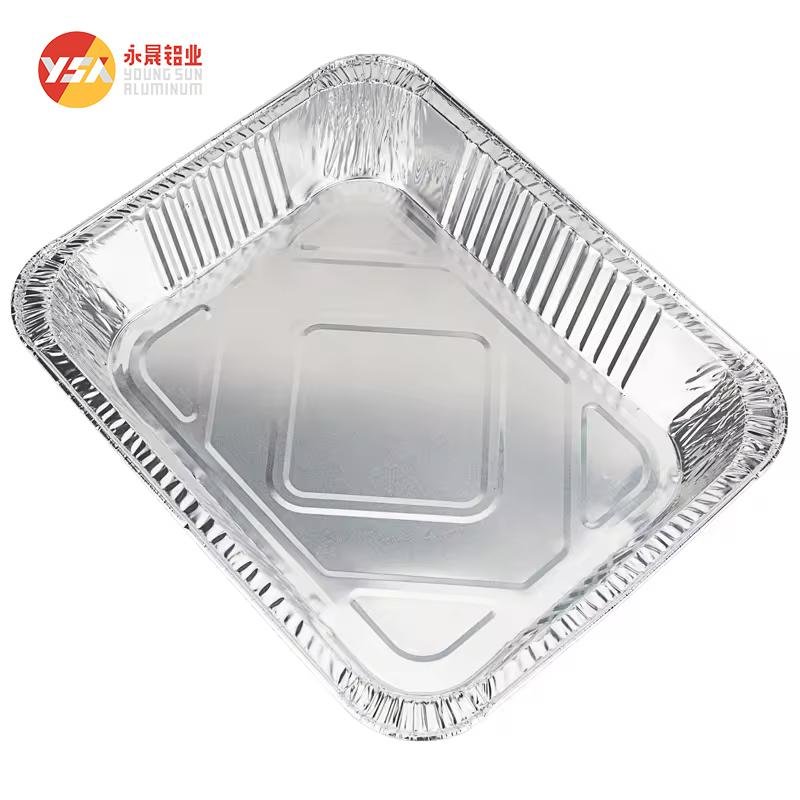Introduction
Full-size aluminum pans are a cornerstone of both home kitchens and professional catering operations. They offer convenience, versatility, and are incredibly easy to use. Yet, one question often arises: how many servings can you actually get from a full-size aluminum pan? Understanding this can transform your cooking and serving experience, ensuring that gatherings are perfectly planned and everyone leaves satisfied.
What is a Full-Size Aluminum Pan?
A full-size aluminum pan typically measures 20 x 12 x 3 inches. This generous size makes it ideal for everything from lasagna to roasted vegetables. Their lightweight yet sturdy nature allows for easy transport, making them a favorite for potlucks and catered events.
Common Uses in Cooking and Catering
These pans shine in various culinary settings. They are often utilized for baking, roasting, and even grilling. Their versatility extends to being excellent for storing leftovers, making them a staple in any kitchen.
Standard Serving Sizes
Understanding serving sizes is crucial for meal planning. A standard serving can vary significantly based on the dish type and the audience.
Defining a Serving: What Does It Mean?
A serving is generally the amount of food that is recommended for one person. It is important to consider both nutritional guidelines and portion sizes when determining how much to serve.
Factors That Influence Serving Sizes
Several factors can influence how much food constitutes a serving. The type of dish, the nature of the gathering, and the demographics of the attendees all play a role. For example, a buffet setting might encourage larger servings, while a formal dinner may suggest smaller portions.
Estimating Servings by Dish Type
Different dishes yield different serving sizes. Here’s a breakdown of what you can expect based on the type of food being prepared.
Casseroles and Baked Dishes
For casseroles, a good rule of thumb is to estimate about 1.5 cups per serving. Therefore, a full-size aluminum pan filled with a casserole could serve approximately 10 to 12 people.
Roasted and Grilled Meats
When it comes to meats, plan for about 6 to 8 ounces per serving. This means a full-size pan could serve around 8 to 10 people, depending on the cut and preparation method.
Pasta and Grain-Based Dishes
Pasta dishes can be a bit trickier due to variability in portioning. Generally, a serving of pasta is about 1 cup. Thus, a full-size pan can serve about 12 to 15 individuals.
Desserts and Baked Goods
For desserts, like brownies or cakes, cutting techniques matter. A typical serving is around 2 inches by 2 inches. Therefore, a full-size pan can yield roughly 24 dessert servings.
Calculating Servings Based on Pan Size
Volume and Capacity of Full-Size Pans
A full-size aluminum pan holds approximately 12 quarts. Understanding this capacity aids in calculating servings per dish accurately.
General Rules of Thumb for Serving Estimates
A simple guideline is to consider the type of dish and its density. Items with more volume typically yield more servings.
Practical Examples of Serving Calculations
For example, if a dish serves 10 and it fills a quarter of the pan, you can estimate the total servings by multiplying accordingly.
Factors Affecting Serving Calculations
Several elements can impact how many servings you can get from a pan.
Dish Thickness and Density
Thicker dishes will naturally yield fewer servings than lighter, fluffier options.
Ingredients and Add-ons
The inclusion of additional ingredients, such as sauces or toppings, can alter serving sizes significantly.
Dietary Considerations: Allergies and Restrictions
Be mindful of dietary restrictions. Adjust serving sizes accordingly to ensure everyone is catered for.
Tips for Accurate Serving Estimations
Using Measuring Tools for Precision
Utilizing measuring cups or scales can help provide accurate serving sizes, particularly for more precise recipes.
Portion Control Equipment: Helpers in the Kitchen
Tools like ice cream scoops or ladles can assist in serving consistent portions.
Visual Cues for Serving Sizes
Training your eye for portion sizes can improve serving accuracy over time. Remember, a serving should look appetizing and generous, yet not excessive.
Adjusting for Leftovers
Best Practices for Storing Leftovers
Always allow food to cool before covering it tightly. Store leftovers in the fridge and consume them within a few days.
Reheating Guidelines for Safety and Quality
When reheating, ensure that food reaches a safe temperature of 165°F to eliminate any risks.
Creative Ideas for Utilizing Leftovers
Get creative! Leftovers can be transformed into soups, stir-fries, or even sandwiches, providing endless meal ideas.
Conclusion
In summary, understanding how many servings are in a full-size aluminum pan can enhance your cooking and hosting experience. By considering dish types, portion sizes, and audience needs, meal planning becomes a breeze. So, embrace the art of cooking and enjoy every delightful gathering!



